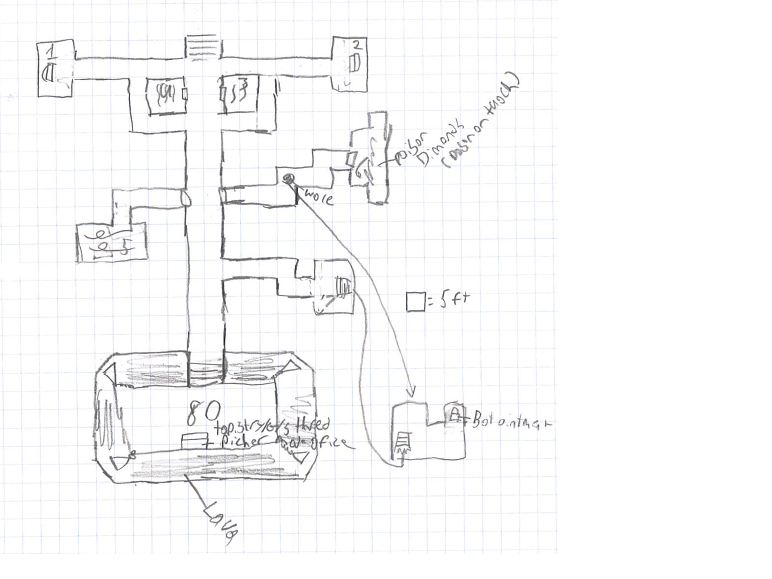The Hydralisk, shamelessly lifted from Starcraft and tripled in potence and nastiness, is among the most fierce of monsters that I introduced in my Adventure Games class.
Here's the stat block 5th edition style:
HYDRALISK
Armor Class 18
Hit Points 68
Speed 30ft
STR 18, DEX 16, CON 18, INT 7, WIS 12, CHA 8
Senses: darkvision 60 ft, Perception 8
Morale 11
Challenge 3 (700 xp)
ACTIONS: 2 per turn
Bite: +4 to hit, 1d6 damage
Claws: +4 to hit, 2d6 + 2 damage
Acid Spittle: Ranged Attack. +2 to hit, Range 30 / 60 ft. 1d6 +2 damage, victim loses 1 point of armor class.
Hydralisks regard all other creatures as prey. Their dreaded acid spittle dissolves metal, leather, wood and bone, leaving flesh jellied so they can lap it up with their long tongues.
A number of the students, upon reading the stat block, moan that the hydralisk is "O.P." ("overpowered"). I like it when they share this opinion, because it opens up the door to a conversation about whether each creature in the game in fact exists solely to be fought in toe-to-toe combat.
In a console game platform this is a totally reasonable assumption. There, if you come up against an antagonist that is too tough, it usually just means that you need to level up or go find an item that gives you a boost and then come back and beat the monster down. In table-top RPG, however, a critter that is tougher than you can be an obstacle to be avoided or defeated / dealt with asymmetrically. The "OP" creature is a challenge to think ahead and plan carefully, rather that a symptom of poor game design.
It's an invitation for the players to try running away / talking to it / luring it onto a bridge and then collapsing it / constructing a giant canvas female hydralisk suit and tricking it into falling in love or any of a million other creative possibilities!
Perhaps to the man with a hammer controller, all problems look like a nail.
This young adventure designer who made the map below wasn't fooling around because BOOM -- hydralisk in the second room of the dungeon! We build up through the disco ball room and the giant spider to what looks like a Harry Potter-inspired climax with a Basilisk in room 6!
The next student had a real burst of enthusiasm with his mapping. I remember him laboring carefully in the very back of the room, trying to get the lines straight. When it came time to stock his 21 room labyrinth with traps, monsters, and treasure, however, he was dismayed at the size of the task and couldn't bring himself to move forward.
I shared this third student created dungeon because it was one of the few that featured more than one horizontal level -- granted level two is only a single room and simply lets the adventurers bypass 30 feet of empty hallway -- but still, thinking about the dungeon in a third dimension is a leap.
Notice the keen lava-moat in room 8 ... making the "pitcher made of ice" all the more mysterious. As Jeff Rients points out, you can never have too much lava.
I know that like The Keep on the Borderlands, which suggested a third dimension but was ultimately just two, almost all of my early designs featured a single, sprawling level rather than stacked sublevels of dungeon. I really only broke out of that mold sometime in high school. Maybe it was a cognitive development thing -- some of my spatial visualization bits simply hadn't come fully online yet?
| Despite all the fancy contour lines and the occasional set of stairs ... it's really just flat |




No comments:
Post a Comment